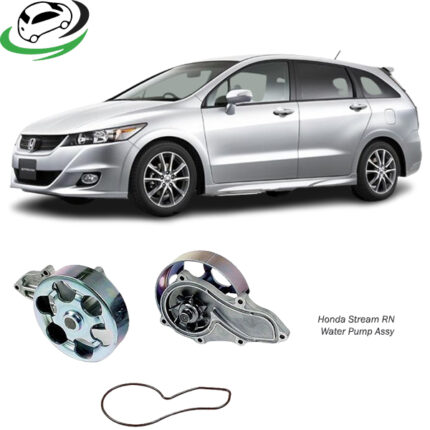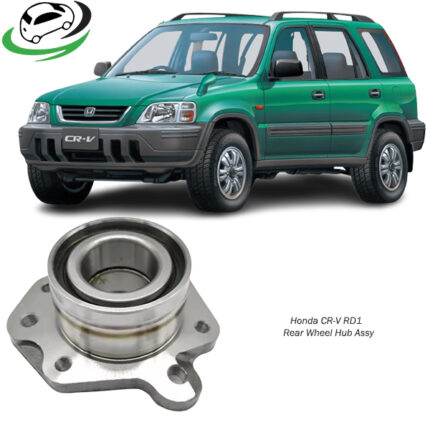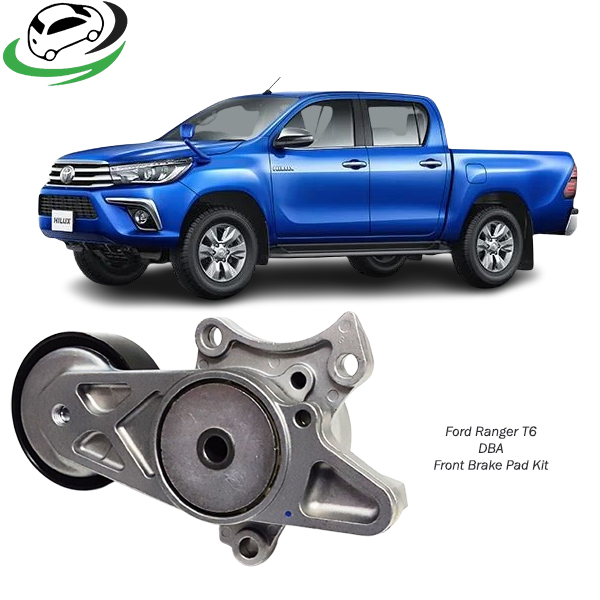-18%
Get Toyota Hilux GUN125 Fan Belt Tensioner 16620-11011 in Kenya
The fan belt tensioner, also known as the accessory belt tensioner or serpentine belt tensioner, is a critical component in modern engine designs. It plays a pivotal role in maintaining proper tension on the engine’s accessory belts, such as the serpentine belt, which drives various components like the alternator, power steering pump, water pump, and air conditioning compressor. Here’s an in-depth exploration of the fan belt tensioner, covering its definition, components, function, types, working mechanism, maintenance, common issues, and importance in vehicle operation.
Definition and Components
Definition
The fan belt tensioner is a mechanical component designed to maintain optimal tension on the serpentine belt or accessory drive belt(s) in an engine. It ensures that the belt remains taut and correctly aligned with the pulleys of various engine accessories, allowing them to operate efficiently.
Components
- Tensioner Body: Main housing that houses internal components and attaches to the engine block or bracket.
- Tensioner Arm: Moves to adjust belt tension based on engine conditions.
- Pulley: A smooth or grooved wheel around which the belt travels. It may be integrated with the tensioner arm or separate.
- Spring Mechanism: Provides the force needed to maintain belt tension. It can be coil spring-based or hydraulic depending on the design.
- Adjustment Mechanism: Allows for manual or automatic adjustment of tension to accommodate belt wear and stretch over time.
Function and Working Mechanism
Function
The primary function of the fan belt tensioner is to maintain the correct tension on the serpentine belt(s). Proper tension ensures that the belt grips the pulleys of the engine accessories tightly, preventing slippage and ensuring efficient operation of components like the alternator, power steering pump, water pump, and air conditioning compressor.
Working Mechanism
- Automatic Adjustment: Most modern tensioners are automatic and use a spring-loaded mechanism. As the serpentine belt wears or stretches over time, the tensioner arm adjusts automatically to maintain optimal belt tension.
- Spring Force: The tensioner spring applies a constant force on the tensioner arm, which in turn applies tension to the serpentine belt. This ensures that the belt remains tight and does not slip on the pulleys during engine operation.
- Pulley Rotation: As the engine runs, the serpentine belt rotates the tensioner pulley. The pulley’s smooth rotation indicates that the tensioner is functioning correctly and maintaining proper tension on the belt.
Types of Fan Belt Tensioners
Spring-Loaded Tensioners
- Utilize a coil spring mechanism to maintain tension on the serpentine belt(s). These tensioners automatically adjust tension as the belt wears or stretches.
Hydraulic Tensioners
- Use hydraulic pressure, often from the engine’s oil system, to maintain belt tension. They offer precise tension control and are commonly found in high-performance or heavy-duty applications.
Manual Tensioners
- Require periodic manual adjustment to maintain proper belt tension. Less common in modern vehicles due to the convenience and reliability of automatic tensioners.
Importance in Vehicle Operation
Reliable Accessory Operation
Proper tension on the serpentine belt(s) ensures that engine accessories operate efficiently and reliably. This includes components critical for vehicle operation and passenger comfort, such as the alternator, power steering pump, water pump, and air conditioning compressor.
Prevents Belt Slippage
Maintaining optimal belt tension prevents slippage between the serpentine belt and the pulleys of engine accessories. Slippage can lead to reduced performance of accessory components and increased wear on the belt itself.
Enhances Engine Efficiency
Efficient operation of engine accessories contributes to overall engine efficiency and performance. Properly tensioned belts reduce parasitic drag on the engine, which can improve fuel efficiency and reduce emissions.
Reduces Maintenance Costs
By ensuring that the serpentine belt and engine accessories operate correctly, the fan belt tensioner helps prevent premature wear and failure of these components. This reduces the frequency of costly repairs and extends the lifespan of engine accessories.
Maintenance and Inspection
Belt Inspection
Regularly inspect the condition of the serpentine belt(s) for signs of wear, cracks, fraying, or glazing. Replace worn or damaged belts promptly to prevent belt failure and potential damage to engine accessories.
Tensioner Inspection
Check the tensioner assembly for signs of wear, corrosion, or leakage. Inspect the tensioner pulley for smooth rotation and listen for any unusual noises during engine operation.
Tensioner Adjustment or Replacement
Follow manufacturer recommendations for tensioner adjustment or replacement intervals. Replace the tensioner if it shows signs of wear or if it fails to maintain proper belt tension.
Belt Tension Adjustment
Some tensioners allow for manual adjustment of belt tension using a specific tool or wrench. Adjust belt tension according to manufacturer specifications to ensure optimal performance and longevity.
Professional Inspection
If you notice symptoms such as squealing noises from the engine compartment, belt slippage, or abnormal accessory operation, have the tensioner and serpentine belt(s) inspected by a qualified mechanic.
Common Issues and Symptoms
Belt Squealing
Squealing noises during engine startup or acceleration may indicate improper belt tension. This could be due to a worn tensioner or stretched serpentine belt.
Belt Slippage
Visible slippage of the serpentine belt on the pulleys of engine accessories may occur if the tensioner fails to maintain proper tension. This can lead to reduced performance of accessory components.
Excessive Belt Wear
Uneven wear, fraying, or cracking of the serpentine belt(s) can result from inadequate tension or a worn-out tensioner. Replace the belt and inspect the tensioner if excessive wear is observed.
Tensioner Noise
Grinding, rattling, or clicking noises from the tensioner assembly during engine operation may indicate worn bearings, spring fatigue, or internal component failure. The tensioner should be replaced if noise persists.
Accessory Component Failure
If the tensioner fails to maintain proper tension on the serpentine belt(s), it can lead to premature wear or failure of engine accessories such as the alternator, power steering pump, or water pump.
Follow us on Facebook for more parts.



